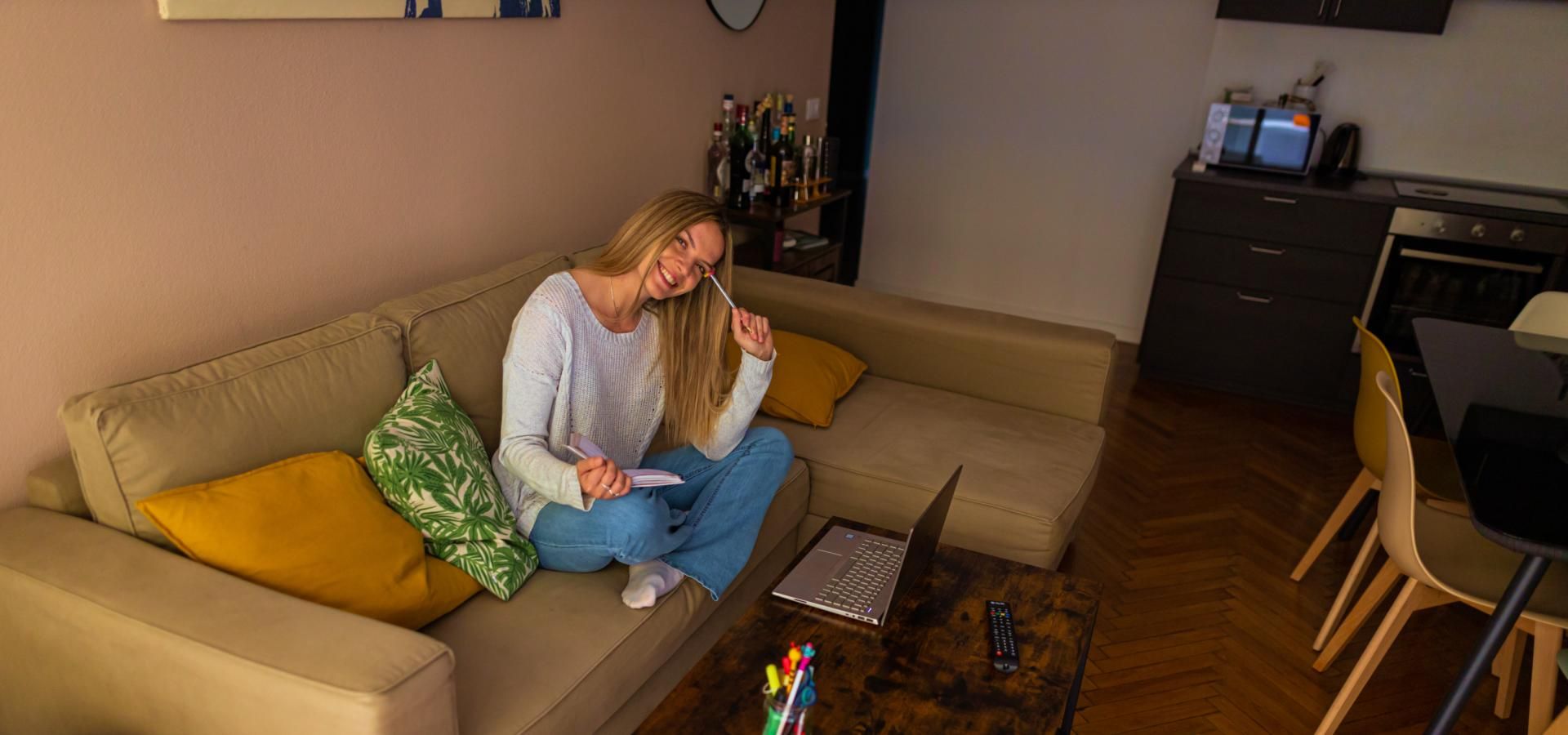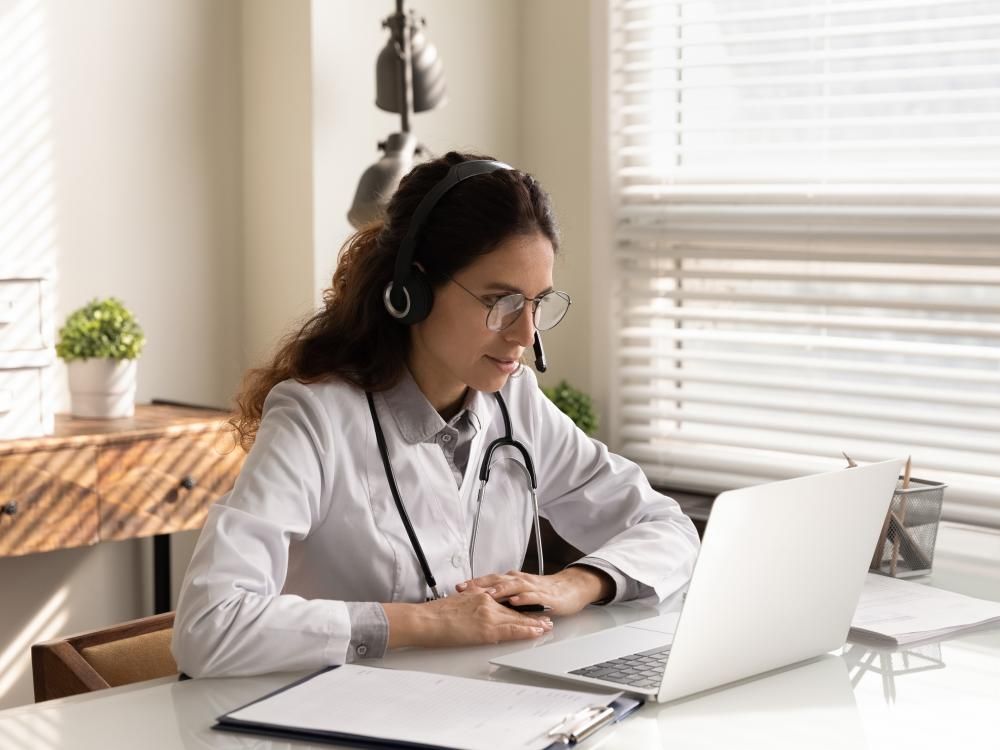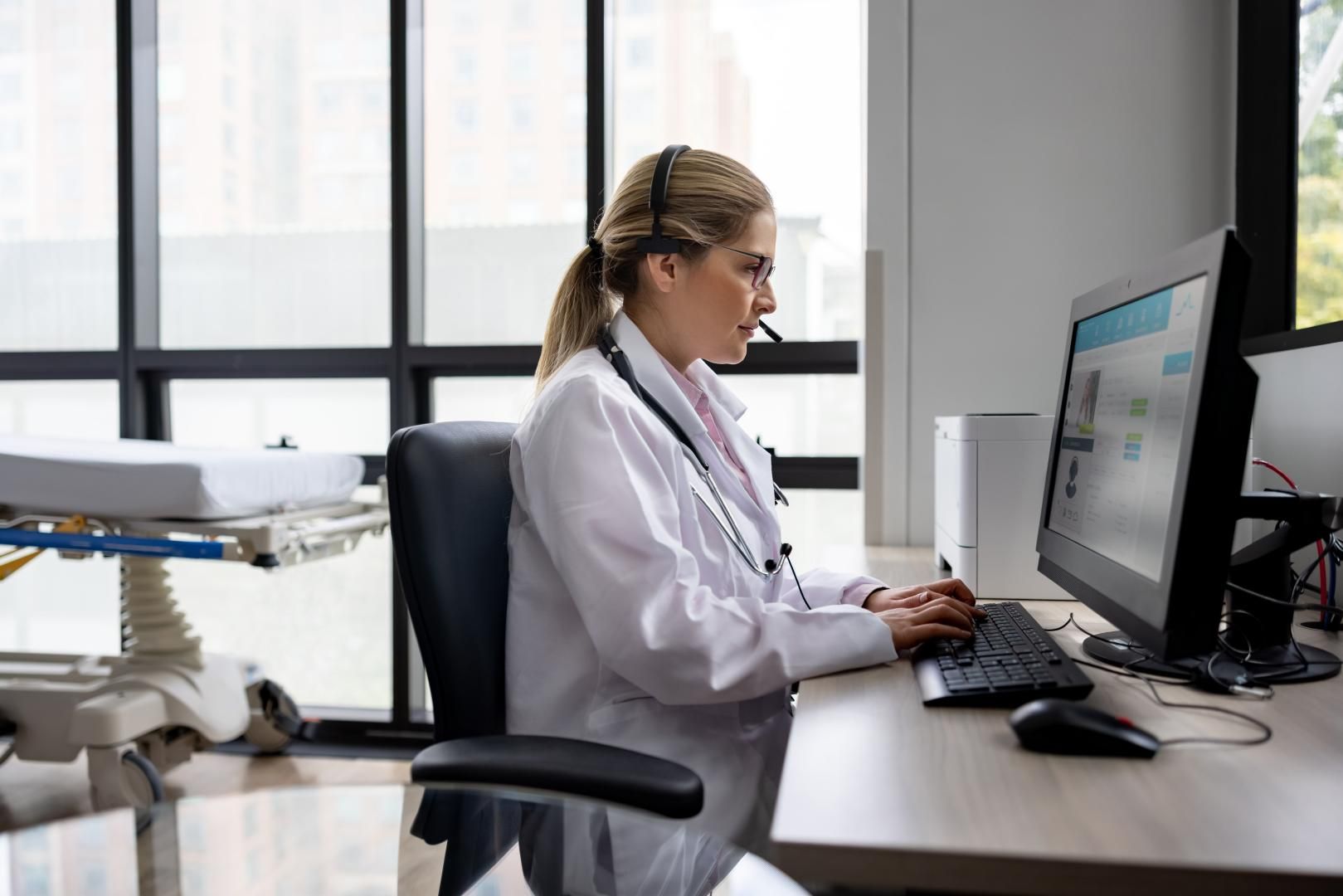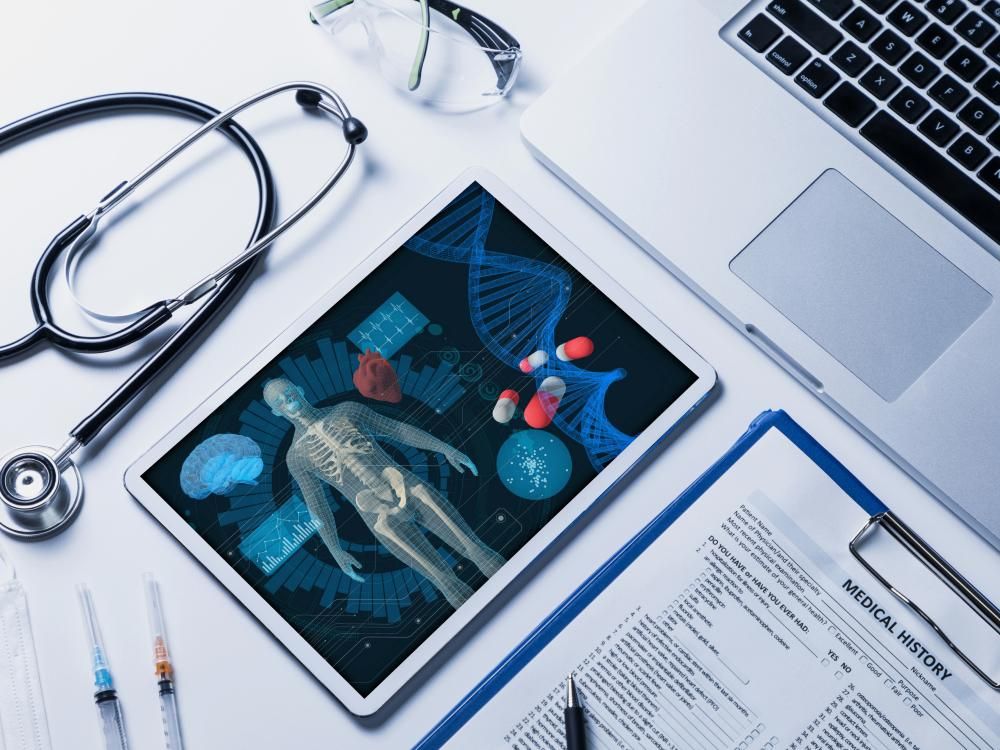
Top telemedicine software features, integrations & use cases
April 30, 2024

by Ana Korzun,
Senior Business Analyst
Tailoring a solution's functionality to the organization's clinical and business requirements is an essential step in telehealth application development, as it ultimately determines its usefulness. Let’s explore both basic and specialized functionality for telehealth solutions, as well as use cases of their successful implementation, and learn how to choose the combination of features most suitable for your medical practice.
Telehealth software usage statistics
revenue expansion is expected for the telemedicine market by 2025
Fairfield Market Research
of patients agreed that telehealth has made care more accessible to them
Statista
of patients use telemedicine services to deal with common illnesses
SingleCare
Essential telemedicine software features
Telemedicine software’s basic functionality focuses on establishing a secure space for productive and uninterrupted virtual consultations.
Backup audio communication channel
Text messaging
Store & forward data exchange
In addition to the real-time communication between patients and clinicians, telehealth apps should enable patients to log symptoms and upload images or videos for medical professionals to examine. This store and forward functionality is essential for specializations that rely heavily on visual examinations like dermatology or symptom observation over extended periods like psychology.
Visit notes templates
Telemedicine applications should streamline note-taking during the virtual visit to let clinicians dedicate more attention to their patients.
This is why telemedicine solutions should provide customizable templates for common visit types that pre-fill patients’ demographic data, medical history, and medication lists from the solution’s database, EHR, or healthcare CRM solutions. During the consultation, medical professionals can simply update relevant information in such templates, which significantly cuts down the time needed for paperwork.
Features for patients
Portals for medical specialists
Regulatory compliance features
Need help conceptualizing a telemedicine solution?
Advanced capabilities for a telehealth app
In addition to essential telehealth features, medical organizations can incorporate more innovative technologies to widen the scope of provided services and stand out among competitors.
VR features
Virtual reality can increase the effectiveness of telecare by immersing the patient in a comfortable and stimulating environment. For example, virtual reality rehabilitation programs that patients can complete at home prove to be as effective as those provided at a specialized facility, while offering more comfort for the patient.
Computer vision algorithms
Computer vision can serve as an additional pair of eyes for a medical professional, analyzing medical images and videos during or after virtual care sessions. It detects anomalies in patients’ appearance or behavior, providing supplementary data to clinicians for more accurate condition assessment.
Chatbots
AI-powered bots can answer patients’ questions 24/7 in a messaging module and help them find the needed information in their medical records or the knowledge base. If the request is urgent, chatbots can connect the patient to relevant medical professionals.
AI-powered clinical decision support systems
AI-powered clinical decision support solutions integrated with telehealth apps can analyze patient data and provide real-time suggestions for relevant diagnostic tests, treatment options or medication adjustments and highlight possible allergies or drug interactions, driving more precise and personalized medical care.
Valuable telehealth integrations
Healthcare providers that want to provide their patients with a more holistic medical experience need to expand their telehealth platform’s functionality through integrations with other healthcare apps.
Medical professionals can receive only limited information from talking to patients and observing them during virtual consultations. To supply telehealth practitioners with more data, patients often use devices measuring heart rate, blood pressure, sugar and oxygen levels, and temperature. Connecting remote patient monitoring devices to telemedicine apps allows healthcare providers to easily observe patients’ vitals during the consultation and track their changes over time. Depending on the parameter to be monitored, integrated devices can be simple wearable fitness trackers or specialized medical IoT devices.
While telehealth apps collect patient health information from consultations or submitted via patient portals, they don’t contain entire medical histories. To provide clinicians with a 360-degree view of patients’ health, healthcare providers can integrate their telehealth platform with the electronic health records system in place.
E-prescribing software
Healthcare professionals providing services via telehealth apps aim to offer a fully remote experience to their patients, including getting a medication prescription without having to pick up its physical copy. Integrating the telemedicine app with an eRx module enables clinicians to generate electronic prescriptions and send them directly to pharmacists to dispatch the medication to patients’ addresses.
Healthcare analytics solutions integrated into the telehealth platform process patients’ health data and provide insights into their symptoms and behavior. Such reports give a basis for more accurate diagnoses and effective treatment, health risk prevention, and patient care personalization to reduce patient no-shows.
Healthcare CRM integration with a telehealth platform speeds up patient registration and appointment scheduling, ensures the effectiveness of sales and marketing campaigns, enables telehealth services’ upselling and cross-selling, and helps centralize patients’ feedback for future improvement of remote healthcare delivery.
Payment gateways
Allowing patients to instantly pay for telehealth services contributes to patients’ convenience, while healthcare providers can receive reimbursement faster. Therefore, medical organizations should equip their telemedicine platform with a variety of payment options for different patient groups.
Our telehealth case studies
With 25+ years of expertise in healthcare software development, we have delivered multiple telehealth solutions tailored to the unique requirements of our clients.

25%
patient wait time reduction
Telehealth app facilitated psychiatric medical care
We delivered a cloud-based telemedicine software solution with a field-specific feature that speeds up remote psychiatric assessments and case creations, improving the accuracy of patient records, and coordinating patient placement across multiple psychiatric facilities.

3x
faster case creation
An RPM and telehealth suite improves care for assault victims
We developed a software suite consisting of a mobile app and a web-based portal that facilitates high-quality video conferencing and secure image transfer. Solutions are integrated with medical devices and patient records management systems to help nurses in rural areas provide care to assault victims.
Telemedicine software conceptualization guide
The telemedicine software market has skyrocketed after the pandemic, so future adopters face a disorientingly large selection of ready-made solutions and custom options. Here’s a three-step guide to help healthcare providers choose the most fitting telehealth option.
1
Assess your objectives & resources
2
Determine the feature set
3
Compare different solutions
Benefits of telemedicine
Schedule and location flexibility for medical care providers
Workload reduction for on-site medical personnel
Improved care accessibility in areas with a shortage of healthcare professionals’
Considerable reduction of healthcare provision costs without compromising service quality
Improved safety and comfort for immunocompromised patients, people with reduced mobility or mental health issues
Fewer no-show patients due to the simplicity of telehealth appointment scheduling, rescheduling, and attendance
Additional revenue streams for healthcare organizations from telehealth service subscriptions
On-demand availability of healthcare services for patients who can’t go to hospital in person
Telehealth software solutions

Streamline telehealth delivery with a relevant feature set
While telemedicine is rightfully hyped by healthcare professionals, patients, and the media, you need to remember that just like any other tool, its capabilities should cater to the medical provider’s business needs. Healthcare providers must have clear goals for telemedicine app implementation, or they risk investing in software that doesn’t benefit their organization. Healthcare organizations that aim to offer virtual medical services have to consider a wide set of factors to find a telehealth solution that fully supports their workflows. Partnering with an experienced healthcare software implementation provider is a great way to secure the success of telemedicine solution adoption.

Need a telehealth app with tailored functionality?
FAQs
How much does customized telemedicine software cost?
The cost of a telehealth development project ranges from $50,000 to over $100,000 depending on the solution’s functionality, number of integrations with other healthcare apps, user base, and other factors. You can turn to our consultants to learn a ballpark estimate for your project.
What hardware and software is used for telemedicine?
Patients and clinicians typically use laptops or smartphones to communicate during the virtual visit. Though in some cases, a smartphone is enough, in others patients need to have special diagnostic tools at home. The software for telemedicine needs to be compliant with relevant privacy and security regulations, so telehealth consultations typically aren’t held over Skype or other general-use communication platforms.
What are the best telehealth apps?
Doctor On Demand, Teladoc, Microsoft Cloud for Healthcare, and Amwell are often mentioned as the best telehealth apps on the market. Still, any out-of-the-box solution must be configured or customized to fit the business requirements of the particular organization. Moreover, if you have highly specialized medical workflows, a custom telehealth solution can prove the most valid option for you.
Do doctors need high-speed Internet to use telehealth apps?
High-speed connectivity is paramount, as it helps avoid annoying disruptions and interferences during video consultations, creating the feeling of a realistic doctor's office visit. Therefore, healthcare professionals need access to hardware, software, and internet connection facilitating HD video consultations to fully assess each patient’s condition and give them their undivided attention.

Case study
Telemedicine-ready EHR
Development and testing of a Telemedicine-enabled EHR, integrated with innovative voice recognition, smartpen and clinical text analysis features.

Insights
Telemedicine for primary care: key functionality, benefits & real-life cases
Learn about the key features of primary care telemedicine software, top platforms, and essential integrations along with the benefits for patients and providers.

Insights
Telemedicine for pediatrics: a comprehensive overview
Discover how to successfully choose, integrate, and implement telemedicine solutions for pediatrics to improve your medical childcare.

Insights
Neurology telemedicine: a full solution overview
Learn about the architecture, features, integrations, and implementation of telestroke and neurology telehealth software and how it can elevate your practice.

Insights
Virtual hospital: key features, examples & benefits of remote care
Learn about virtual hospitals, their architecture, integrations, and types. Explore their benefits for doctors and patients and implementation challenges.

Case study
Asthma monitoring software suite
Discover the tips and tricks behind asthma monitoring software developed by Itransition’s team to help asthma patients self-manage their condition.
More about healthcare software services
Services
- Healthcare software development
- Healthcare mobile app development
- Patient portals
- Hospital management software
- Hospital inventory management software
- CRM
- Data analytics
- Remote patient monitoring
- Medical image analysis
- Pharmacy management software
- Medical device software development
- Patient engagement solutions
EHR
Telehealth